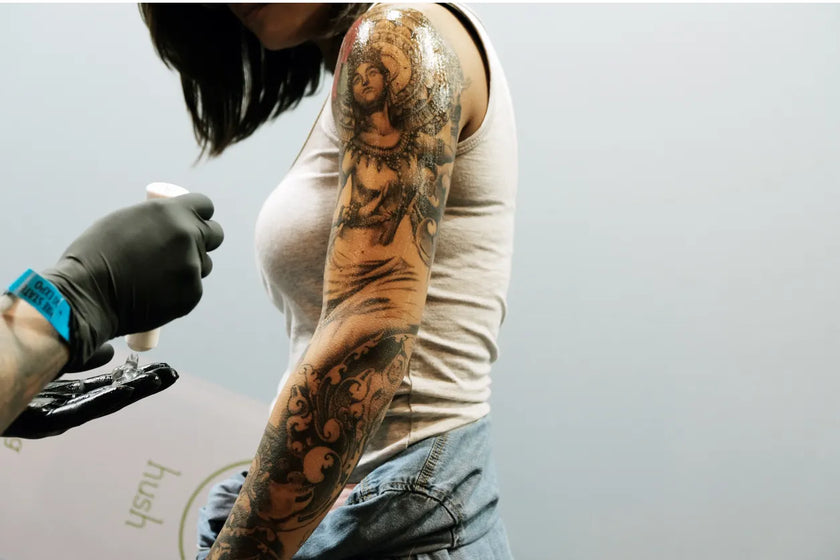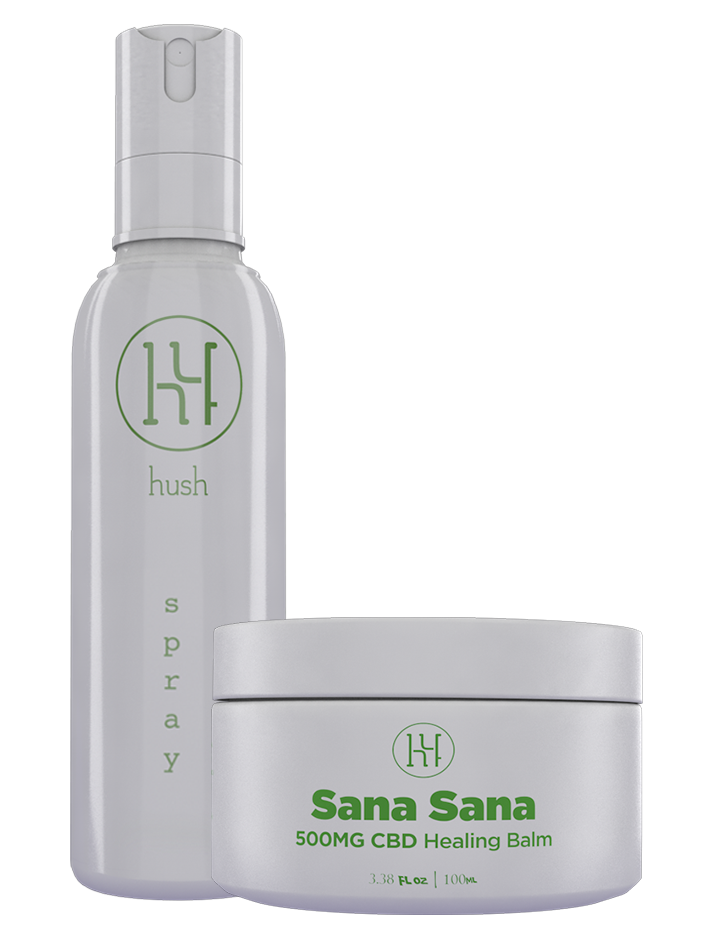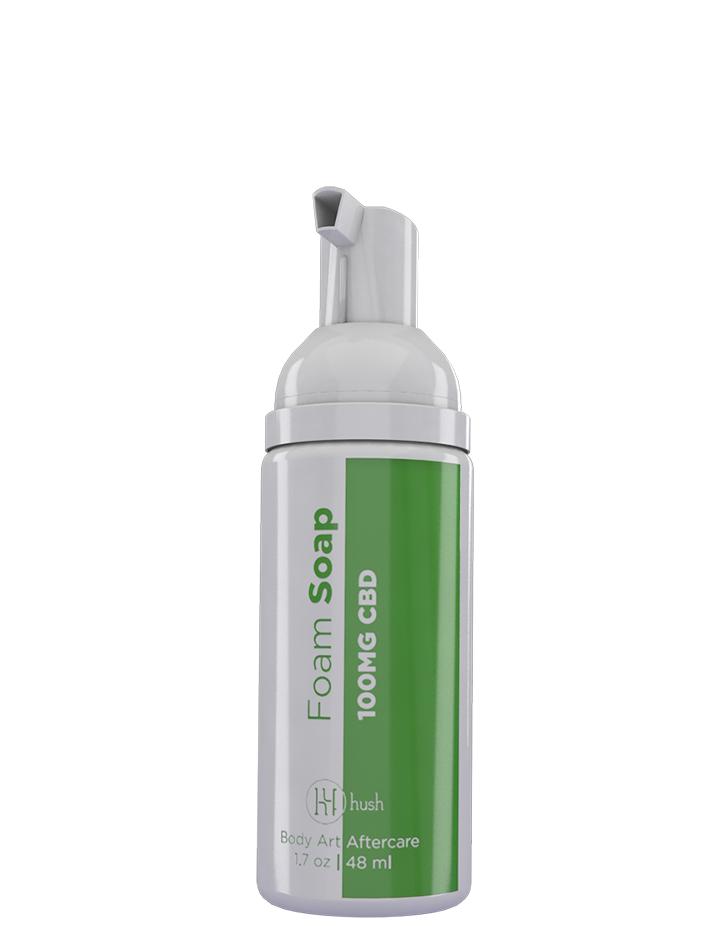Stick-and-poke tattoos used to be the only kind of tattoo. If you wanted a tattoo, you didn’t have a choice.
They’ve fallen from mainstream popularity (outside of cultural and religious tattooing) since electric tattoo equipment became easily accessible and general interest in tattoos rose. Now you have a choice: do you wanna keep things modern and use the machine, or go old school with a stick and poke?
Here’s what you should consider before deciding on your new tattoo.
What Is a Stick-and-Poke Tattoo?

Most tattoos are performed with an electrical tattoo machine. This device looks like a large pen with a big grip and contains a grouping of tattoo needles. The needles fit into a small motor.
The pen is connected to an electrical box that controls the speed and power of the motor. The needles rapidly vibrate while depositing ink, leading to a series of needle pokes that go so fast that it almost feels like one consistent motion. It goes so quickly that you won’t feel individual pokes.
A stick-and-poke tattoo (also called a hand-poked tattoo or a stick-n-poke tattoo) is basically an acoustic alternative to the electric version. Electricity is completely eliminated from the situation.
A tattoo artist pokes the inked needle in by hand each time, which often gives the appearance of closely grouped dots instead of a long, consistent line. You’re aware of each individual poke because the process is a bit slower.
The History of Stick-and-Poke Tattoos
Tattoos were invented over 5,000 years ago. There are entombed mummies with tattoos that are still visible to this day. Homes didn’t have electricity until a little more than 200 years ago. That means that tattoos were given without electricity for about 4,800 years. Stick-and-poke tattoos were the original tattoos.
Each culture had their own unique approach to stick-and-poke tattoos. They’ve been around since long before the invention of actual needles. Some stick-and-poke tattoo apparatuses were made of sharpened bone handles with fine bone points like those still used in traditional Polynesian tribal tattooing. Traditional Japanese stick-and-poke tattoo art utilizes groups of needles attached to a wooden rod by tightly wrapped silk thread.
Stick-and-poke tattoos played an important role in early societies and civilizations. Societies used tattoos as badges to recognize warriors or high-ranking members of religions for their accomplishments. They also used tattoos as a way to label and punish criminals in a time when there were no mugshot databases.
Stick-and-poke tattoos became recognized as an art form closer to the modern era, with Japanese traditional tattoos becoming the best-known modern example of purely decorative body art.
Now, stick-and-poke tattoos are an homage to traditional methods of art. It’s similar to how some people still collect vinyl records when they can stream their favorite music online. Stick-and-poke tattoos have a unique quality that honors original methods used by pioneer artists to create their masterpieces.
Are Stick-and-Poke Tattoos Safe?
Stick-and-poke tattoos are safe when performed by a professional poke tattoo artist in a sterile environment with safe tattoo inks. Most professional tattoo artists working out of a licensed tattoo shop should be able to safely perform poke tattoos if they’re comfortable with the method.
Improvised stick-and-poke tattoos that use supplies not intended for tattoos may be unsafe. Even if you use a professional tattoo kit, there are still a lot of scenarios where a DIY tattoo can quickly go wrong.
Homemade tattoos are sometimes referred to as “prison tattoos” because they mimic the methods and improvisation used by inmates in jail. These types of stick-and-poke tattoos often become infected and leave scarring.
Even if they don’t, the inconsistency between pokes can lead to a muddled image that fades unevenly. This often leads to a healed stick-and-poke tattoo that barely resembles the original art.
Can You Do Stick-and-Poke Tattoos Yourself?
People found a lot of ways to keep busy during the pandemic. Some people joined virtual book clubs, some people learned to make sourdough bread, and some people started giving themselves DIY tattoo art with india ink and sewing needles.
Now that the pandemic is over ask these people how they feel about their impulsive designs. More importantly, take a look at them now that they’ve healed. You’re probably going to find a lot of regrets.
Stick-and-poke tattoos may look easy to do yourself, but they’re a bit more complicated than they seem. You need to know how deep to go with the needle, how much ink to use, and how to keep a steady stream of pokes.
You also have to poke yourself hundreds of times, passing over the same spots. That part takes a lot of nerve.
In addition to the difficulty factor, you must contend with the sanitation factor and the risk of cross-contamination. Even if you keep your house very clean, it’s almost impossible to keep it hospital-level clean.
You probably have pets. You might live with other people and can’t control their cleanliness habits. Stick-and-poke tattoos look cool, and saving money probably sounds appealing, but is it worth the risk of infection? We vote “no" on DIY stick-and-poke tattoos.
Do Stick-and-Poke Tattoos Look as Good as Regular Tattoos?

Stick-and-poke tattoos tend to look completely different from regular tattoos. It’s not about which looks better. It’s about which style will work better for your idea. There are plenty of gorgeous stick-and-poke tattoos performed by professional traditional artists that will make your jaw drop.
The key is to match the style of tattoo you want with the tattoo method most appropriate. A watercolor tattoo done in stick and poke probably won’t work so great.
The shading is very complicated and best left to a sophisticated electric tattoo rig. The same goes for something that requires very precise linework with thin lines. It’s just not possible with stick and poke.
If you’re looking for a minimalist black-and-white piece with stipple shading, a stick-and-poke tattoo might look much more artful than an electric tattoo rig can create. Your artist can weigh your proposed design's pros and cons.
You’ll also want to consider the size. Stick-and-poke tattoos will take much longer than machine tattoos. You might want to save the stick and poke for a small tattoo. Getting a cohesive sleeve piece in stick and poke could take you years to complete.
How Long Do Stick-and-Poke Tattoos Last?
Stick-and-poke tattoos age a little differently from tattoos performed with electric equipment. It’s very difficult to keep the ink depth of a stick-and-poke tattoo consistent. Each dot is placed by a human hand, and small differences in depth can cause significant differences.
Stick-and-poke tattoos often fade to a charcoal gray as they heal, which doesn’t necessarily look bad. It may soften the appearance of each individual dot, making a stick-and-poke tattoo look a little more uniform. Over time, the charcoal gray may fade to a silver gray until the stick-and-poke tattoo no longer looks distinct.
This won’t always happen with stick-and-poke tattoos. Highly experienced hand-poke artists have mastered consistency and they know how to choose the right tools for the job. A stick and poke performed by an expert with an extensive background in the art form may age just the same as a conventional tattoo.
Like with any tattoo, your tattoo aftercare products will have a huge impact on the way your art looks and heals. Improper tattoo aftercare can cause your tattoo to scab, peel, fade, and leave a scar behind. It can nearly disappear if you don’t take very good care of your stick-and-poke tattoo.
In Conclusion: A Well Done Stick-and-Poke Tattoo Can Be Gorgeous
Stick-and-poke tattoos aren’t a DIY project, and you shouldn’t do them to yourself at home. It’s worth finding a talented, experienced tattoo artisan who has mastered the art of hand poked tattoos.
Choose a design that will work with the hand poked style and trust your professional artist to guide you in the right direction. Aftercare is extremely important for stick-and-poke tattoos. They can fade quickly if you’re not vigilant about protecting them.
Our aftercare set contains everything you need to help your stick-and-poke tattoo while it heals, as well as a deeply nourishing balm you can use to keep your tattooed skin moisturized and vibrant long after the healing process is complete.
Sources:
Ancient Tattoos | Archaeology Magazine
Skin Stories . Role of Tattoo | PBS
Gender stereotypes: tattoos in ancient times and the myth of the Amazons | Museo de Ecología Humana
Germs: Understand and protect against bacteria, viruses and infections | Mayo Clinic




